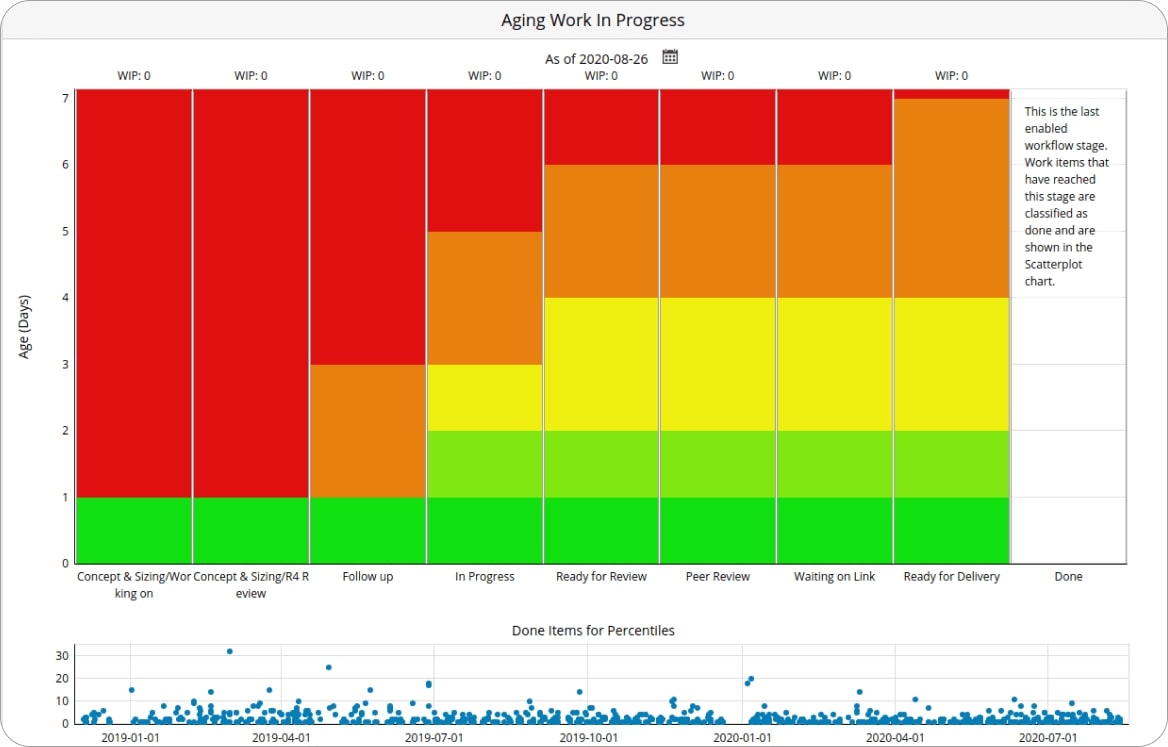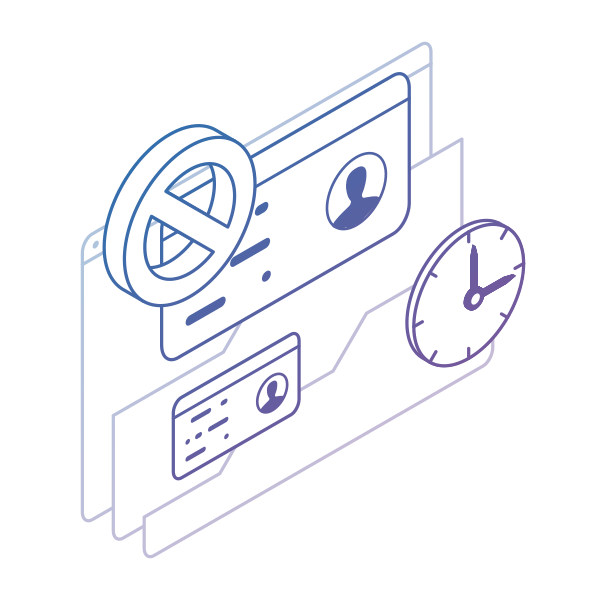Applying the Kanban method to your work process has proven to be an effective way to increase efficiency and enhance teams' productivity.
However, in the beginning, as a manager, you may be struggling to determine which metrics to track and how to extract data to prove that performance is really improving. One of the first things you need to start monitoring is your aging work in progress (WIP) on the Kanban board.
Work in Progress (WIP) in Lean Project Management
Limiting work in progress is crucial for implementing Lean management. As the latter’s aim is to minimize waste and increase efficiency, the Kanban method is a perfect way to apply the Lean principles to your process.
The purpose of the Kanban board is to make work visible and keep it organized. Kanban cards are passing through the different stages towards completion and represent your working process.
The Kanban method prescribes that you always aim for shorter cycle times. To achieve this, you should apply WIP limits to your project and structure your board to best reflect your process. The value of flow is recognized as a powerful way to ensure solid WIP management and thus, timely delivery.
In Lean management, the shorter the cycle time of the assignments on your board gets, the more items you can produce in a certain time period.
Applying WIP limits helps your team to minimize multitasking and avoid constant context switching.
However, simply setting limits does not ensure higher productivity. The build-measure-learn cycle, a cornerstone element of Lean, ensures that you achieve a culture of continuous improvement (kaizen).
In this sense, after building your Kanban board, you need to continue measuring key performance indicators. The next step is to track how these actions actually reflect on your results. This will be necessary for you to be able to improve your process further.
Why Do You Need to Track Aging WIP in Project Management?
Aging WIP management is basically a flow analysis. It allows you to visualize how tasks are progressing from Requested towards your Kanban board's Done column.
They spend different amounts of time in each of the sub-columns. It is important to know where the process is slowing down in order to determine why and how to improve it.
Having this data, you can easily understand how your team was performing in similar contexts in the past. These statistics could be used to motivate new strategic goals in front of high management and as discussion points within the team.
How to Use Aging WIP Chart?
An easy way to monitor aging WIP is by using the aging WIP chart, which is part of some professional Kanban software solutions. It is an easy to use tool for WIP analysis as it looks similar to your team’s board. The chart extracts data from the board and presents it clearly to summarize your flow.

Every aging WIP chart contains the following elements:
- Columns (horizontal axis)
- Age (left vertical axis)
- Pace Percentiles (right vertical axis)
- Tasks (dots in the chart)
To be more precise, you can choose specific dates to monitor by selecting a time frame from the calendar icon at the top. The default setting will be the current day.
The horizontal axis represents all stages of the process (the columns of the board). On the top, above each column, there is a WIP indicator showing how many tasks are in progress in every stage.
The vertical axis visualizes how long each task has spent in that section, in days. If you are eager to get a deeper understanding of it, there is more detailed information and instructions in the article on Aging WIP.
Interpreting Data
By tracking which tasks take the longest time to complete, you can easily draw valuable conclusions. For example, it may be a specific employee who needs more time, and they may need extra training.
You may also find a problem with the setting of your Kanban board and determine that certain columns are not optimally organized, which is slowing down the process. It may be a review column with a too high WIP limit causing disruptions in the flow.
To prevent such delays, it is a good practice to set an automatic message for the assignees of tasks, having spent more than the usual time in the "In Progress" area. It could tell them that maybe the task needs to be broken down into smaller ones in order to pass faster through the funnel and thus not clog the process by filling the WIP limits.
If you want to maintain a healthy Lean process and get the most out of Kanban, you should combine this metric with the other indicators and use it along with the cumulative flow diagram, Monte Carlo simulations, and throughput histogram.
To discover the power of analytics and the benefits for your work, try experimenting with them. Don’t exclude the opportunity to give your build-measure-learn feedback loop a whole new meaning.
We offer the most flexible software platform
for outcome-driven enterprise agility.
In Summary
Work in Progress analysis is one of the most important parts of Kanban. Aging WIP chart can help you understand your workflow, identify why and where the process is slowing down. If you want to ensure a healthy flow, you need to monitor your aging WIP together with cycle time and throughput.
- Monitoring aging WIP allows you to identify causes for inefficiency.
- The Aging WIP chart extracts data from your Kanban board and presents it in a concise visual way to summarize your flow.
- The data lets you easily get an idea of how your team performed in similar contexts in the past.









